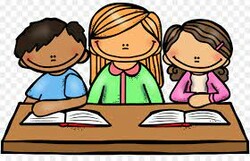September - Welcome Back
My name is Christy Nichol. I hope that everyone has enjoyed a restful summer and is feeling refreshed and ready for a new school year. I hope you had time to connect with family and friends, enjoy some time together and make some special memories over the summer.
I am a busy mom of four and love spending time with kids. I have been teaching a variety of classes from Grades 1-6 since 2007, with a few breaks in between to stay at home with my own babies. I have a passion for mental health and I am grateful to be back at Wes Hosford part time this year as a School Counsellor. I will typically be at the school on Tuesdays, Wednesdays (pm), and Fridays this year. This may change from time to time, so I’ll try to post a schedule outside of my office so students know when I am in the school. You can reach me by emailing me at christy.nichol@eips.ca or by phoning the school when I am in.
I hope to visit all our Wes Hosford classrooms in the first few weeks of September to see some familiar faces and meet new ones too.
If you think your child may benefit from coming to see me, the following information may be helpful to share with them.
Q: Why would I see the counsellor?
A: A counsellor is an adult who acts as your advocate. An advocate is someone who wants to listen to what you have to say and helps you come up with solutions. It does not mean I can solve the problems for you; it does mean that you have a safe place you can go to when you are not sure what to do.
Also, a counsellor can:
-make sure you’ve got all the right facts.
-help you express your needs and feelings.
-help you figure out what to do next.
-help you tap into your own strengths and resources.
Q: What sorts of things can I talk to the counsellor about?
A: You may want to talk to me if you have any academic, or personal concerns. For example:
“I’m having trouble making friends.”
“I’m having a hard time paying attention in class.”
“My parents and I argue often.”
Q: How do I request to see the counsellor?
A: Let the office or your teacher know you need to see me and I will let your teacher know when you can come to my counselling office. Don't worry, no one else needs to know we are chatting!
Q: Is what I say kept private?
A: All information shared is considered confidential or private unless we have been given permission by you to share the information or if the information interferes with one or more of three legal restrictions: the student is planning to harm themselves or someone else; someone is harming the student; a judge or FOIP request occurs and records are subpoenaed.
This year, we are fortunate to have Miss K, our Mental Health Capacity Builder working at Wes Hosford. Miss K will be visiting classrooms to deliver Mental Health lessons and we look forward to working collaboratively this year to benefit our school community.
I'm looking forward to another great school year! Please reach out with any questions you may have!


